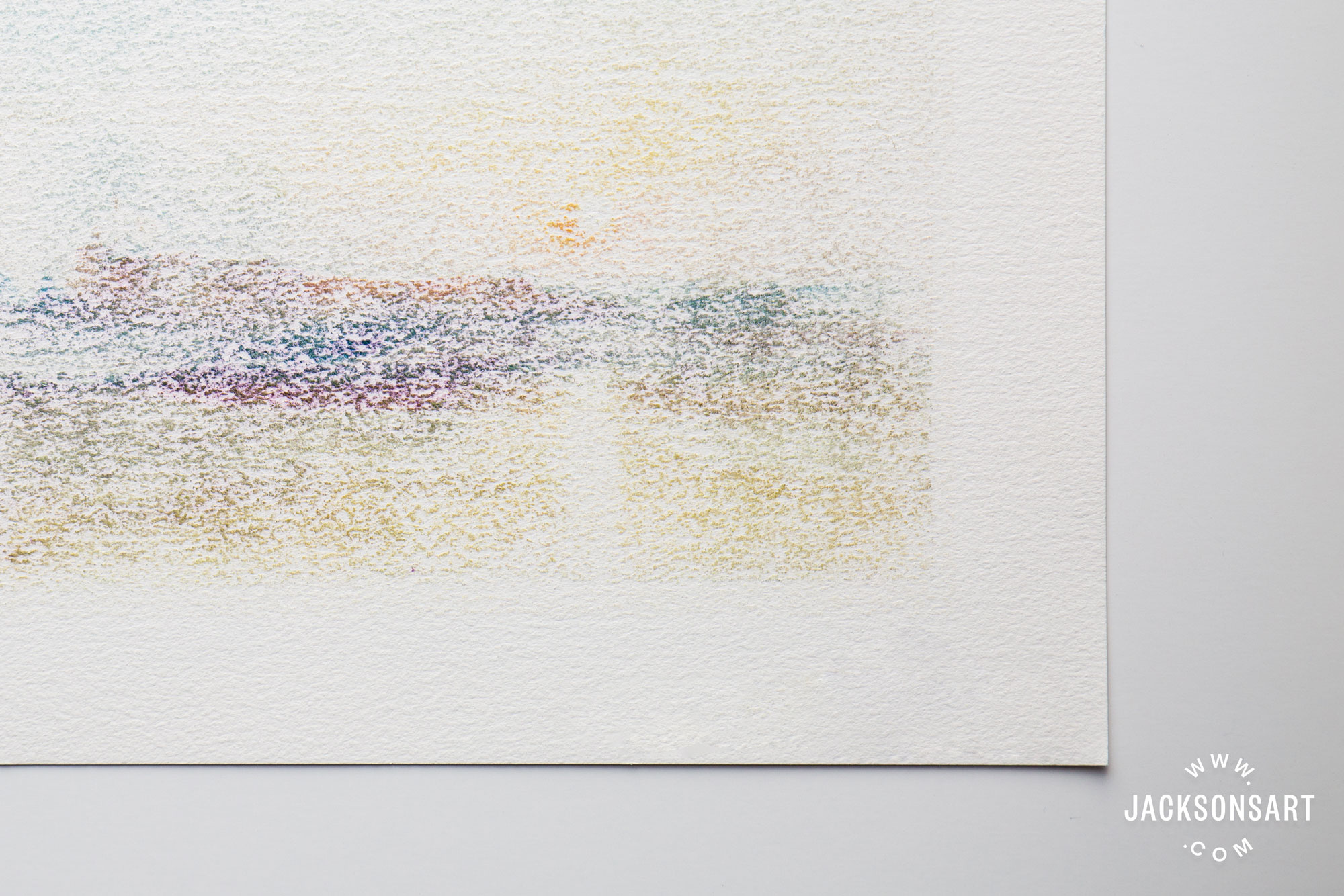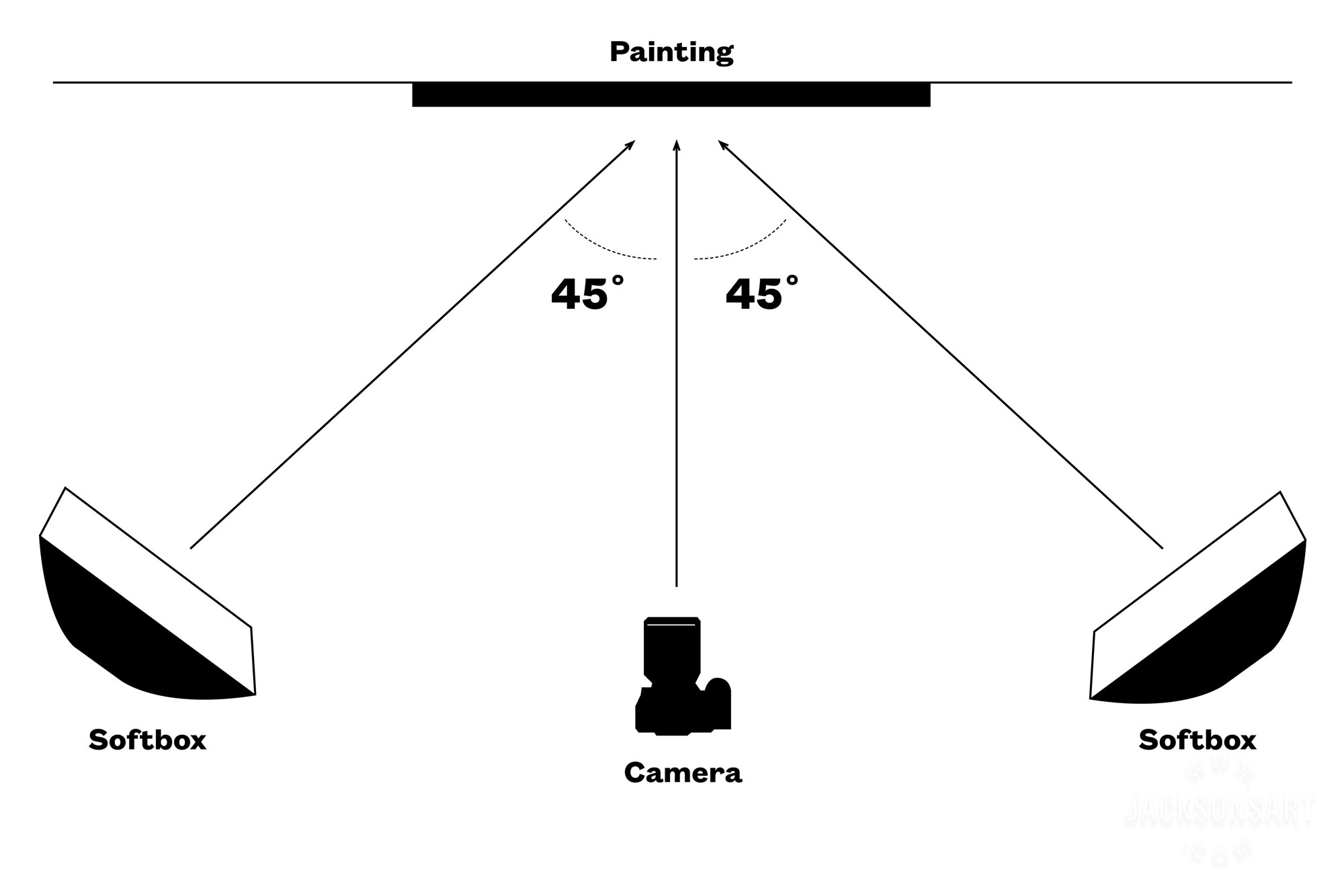How Much Ink Do You Use Printing Art From Home Inkjet
Prints of paintings and drawings are a popular method of sharing and seeing art, and more than and more artists are making reproduction prints as part of their practise.
When preparing to brand prints of artwork, it helps to consider the factors and costs that go into the process. There are cheap solutions available which can be achieved at domicile, although an artists' needs will vary depending on where the prints will be seen, whether they might exist function of an exhibition of work or a portfolio, or given to friends and family. We've explored the main factors worth considering when making reproduction prints of paintings and illustrations.
Why Print on Digital Newspaper Rather than Regular Paper?
Digital papers are coated to ensure inkjet receptivity, like size on an artist'south canvas. This blanket varies from manufacturer to manufacturer and is designed to prevent the ink from wicking or percolating along the paper fibres, which would lead to colour distortions and blurring.
Some papers take an overcoating, which is how it gets a glossy or pearl stop. For instance, when making pearl papers, manufactures use a porous 'micropore' plastic coating that holds paint inks on the surface, or in the pores themselves. This allows colours to appear as luminous as the original painting. This is not possible when printing on regular paper, equally it does non accept the same coating and the ink tends to sink into the paper, making the colours appear dull and faded.

Printing on uncoated paper will crusade the colour to sink into the paper, making the impress appear dull and faded.
Digital newspaper is typically coated on ane side, unless the packaging states otherwise. To double-check you are printing on the coated side of the paper, lightly touch one corner of it with a wet finger. The right side for printing volition feel a little sticky.
Paradigm Quality
A high-quality paradigm is necessary for a proficient print. To be able to make a high-quality print, the camera or scanner used to capture or scan the artwork must exist able to do so at a high level of resolution. To compare, most digital photos are recorded at a resolution of 72 DPI ('dots per inch'), and the image file of an art print should be closer to 300 DPI. This is because the more dots of colour that can be printed in a modest surface area, the more detailed your terminal image will appear.
You can photograph your work at home, with a camera or even your phone. Outsourcing to a professional photography studio volition guarantee your artwork is captured accurately and at the best possible resolution. You can as well have artwork professionally scanned on a pulsate scanner.
For press at dwelling house, there are resources online which can assistance place inkjet printers that operate on pigment ink-based systems. ICC profiles provided past paper manufacturers tin also help you to accurately lucifer upward and reproduce colour quality, ensuring the concluding print quality is of a good standard. ICC (International Color Consortium) profiles are sets of data that draw the properties of a colour space and the range of colours (gamut) that a monitor can display, or a printer can impress.
Photographing Your Artwork
Find a neutral coloured wall and hang the artwork at a height where the middle of the piece volition exist parallel to where the photographic camera will exist – either on a tripod or resting on a tabular array or other sturdy surface.
If you lot are working indoors, ensure the room has plenty of windows and natural light. Uneven lite across your artwork tin can be balanced out by holding up a white surface, so the low-cal bounces off this and illuminates the areas of your artwork furthest away from the window.
Indirect sunlight provides good lighting then some artists also photo their work outdoors when it's cloudy or overcast. If y'all would rather work indoors, you volition demand to set upwards a lighting kit. If yous don't take access to a professional lighting kit, you lot tin can evenly lengthened the calorie-free with a white sheet or white plastic between the lights and your work.

Example photography set-up for artworks.
Ensure the camera is set so the lens lines upward with the middle of the painting, positioned so that the frame is filled with most of the painting, with some of the groundwork visible as a border. You can crop this out later, but it gives you lot some leeway when taking the photograph. Typical studio settings for a DSLR require a depression ISO, unremarkably around 100, and an f-terminate of between f-8 and f-11.
You can utilise a remote or timer when taking the photograph, so the shutter button doesn't jolt the paradigm out of focus. After, you can employ photo editing software to color match and correct any inconsistencies caused by the photographic camera, ensuring what you see on the screen looks as close to the painting every bit possible.
Types of Newspaper
There is a range of specialist fine art digital papers which can be used when press works in different mediums.
It can exist more difficult to create prints from watercolours than from other kinds of paintings because of their transparency and granulation. Artists looking to print watercolour paintings can cull from a selection of mould-made papers with textured surfaces, which help to authentically replicate the character and feel of traditional watercolour paintings. They are typically available in bright white and natural white colours to complement different types of piece of work.
Paper makers like St Cuthberts Factory also offer digital papers with similar surfaces to their traditional papers, such as their Bockingford and Somerset range, assuasive watercolourists and printmakers to lucifer their prints to original works.
Oil and acrylic painters can also choose from different textured canvas surfaces and weights, as well as Gloss, Matt, and Satin finishes, depending on your requirements.
These papers are also excellent for reproducing prints and etches, however, some manufacturers also produce specialist printmaking and etching papers, like Bockingford and Hahnemühle German Carving – a traditional mould-made copperplate press paper.
Hahnemühle, Legion, and other paper makers besides provide downloadable ICC profiles for your printer. To reproduce accurate colour quality, certain settings should be calibrated before printing. To reach accurate colour quality over longer periods, artists tin use profiles. For individual ane-off prints, profiles aren't e'er necessary. For more than detail on profiling, see the handling instructions on Hahnemühle's ICC download page.
Double-sided papers are also pop and versatile. Creating your own book is another way of using digital papers to present your work, such every bit by creating a catalogue to accompany an exhibition, or share with friends and family. Read our commodity The Simplicity of Self Publishing for advice on creating books.
Protecting Prints
If you are making prints at home to sell at fine art fairs, open studios, or online, yous will want to package them for safe transport. If they are A2 or smaller, Jackson'south Polypropylene Bags are perfect – but add a stiffener similar a piece of mountboard (Daler Graduate is ready cutting and economical).
Our Framing Department offers a range of solutions for framing prints, including ready-made and bespoke made to order frames in a variety of sizes and styles.
Shop Digital Printing at Jackson'due south
Read More:
- How To Organise Your Own Art Exhibition
- Online Art Classes For Adults
- Making Handmade Watercolours
- Increasing The Value Of Your Artwork
Source: https://www.jacksonsart.com/blog/2020/11/16/making-art-prints-at-home-or-in-the-studio/
0 Response to "How Much Ink Do You Use Printing Art From Home Inkjet"
Post a Comment